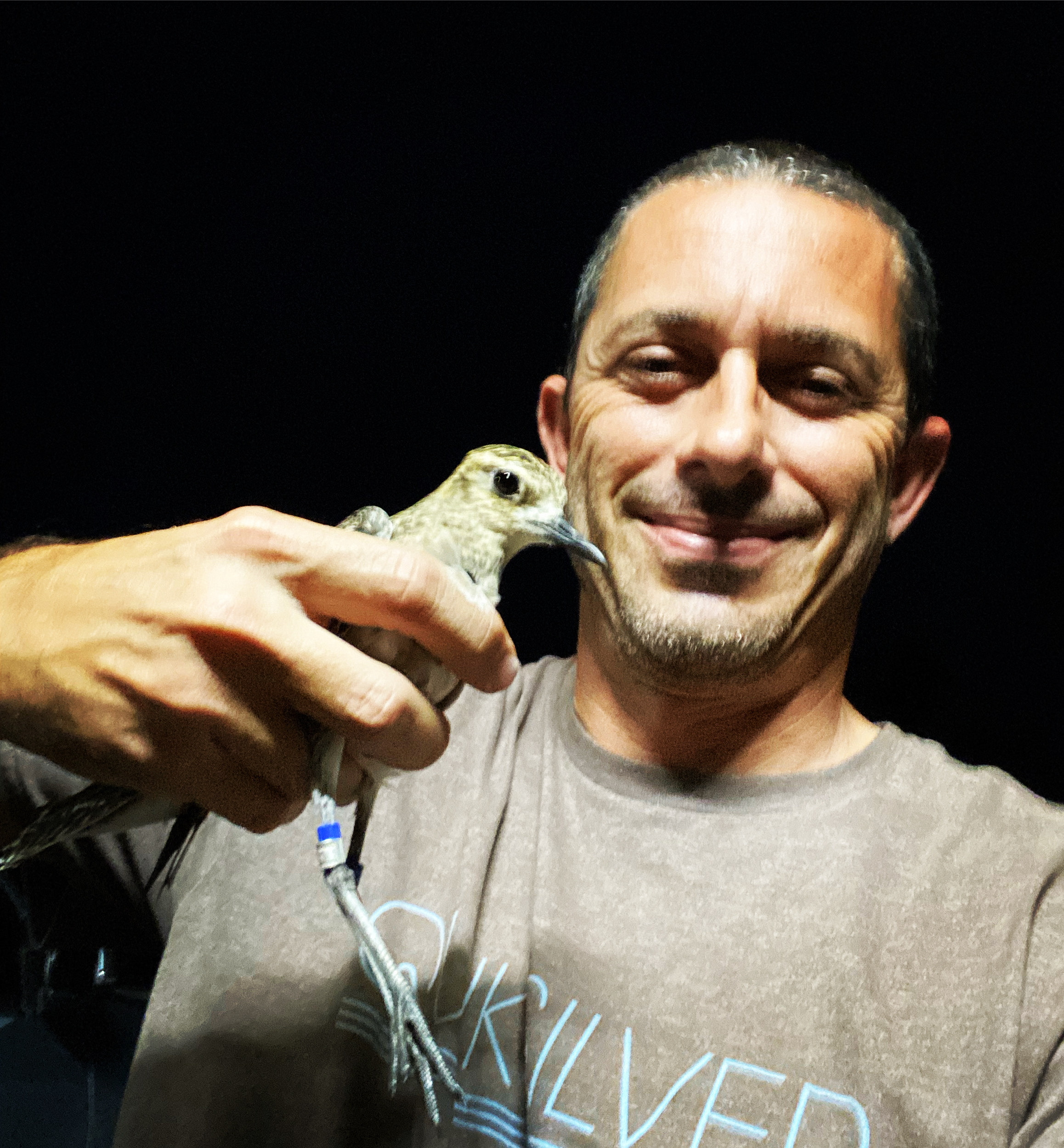
A happy Joshua Fisher, USFWS Invasive Species Biologist, holds the elusive kōlea he finally caught with a netgun. Wally Johnson photo
December 13, 2023
Two years after researcher Wally Johnson and countless volunteers fitted 20 Punchbowl kōlea with satellite tracking tags, four birds still carried their tiny backpacks. Time after time, Wally and helpers arrived in the cemetery with headlamps, cameras, mist nets, and netguns to recapture the birds. Besides relieving the kōlea of their no-longer-functioning tags, Wally wanted to see how they had fared physically. Each of the four have flown two round-trips to Alaska and back, or about 12,000 miles, carrying the tags.
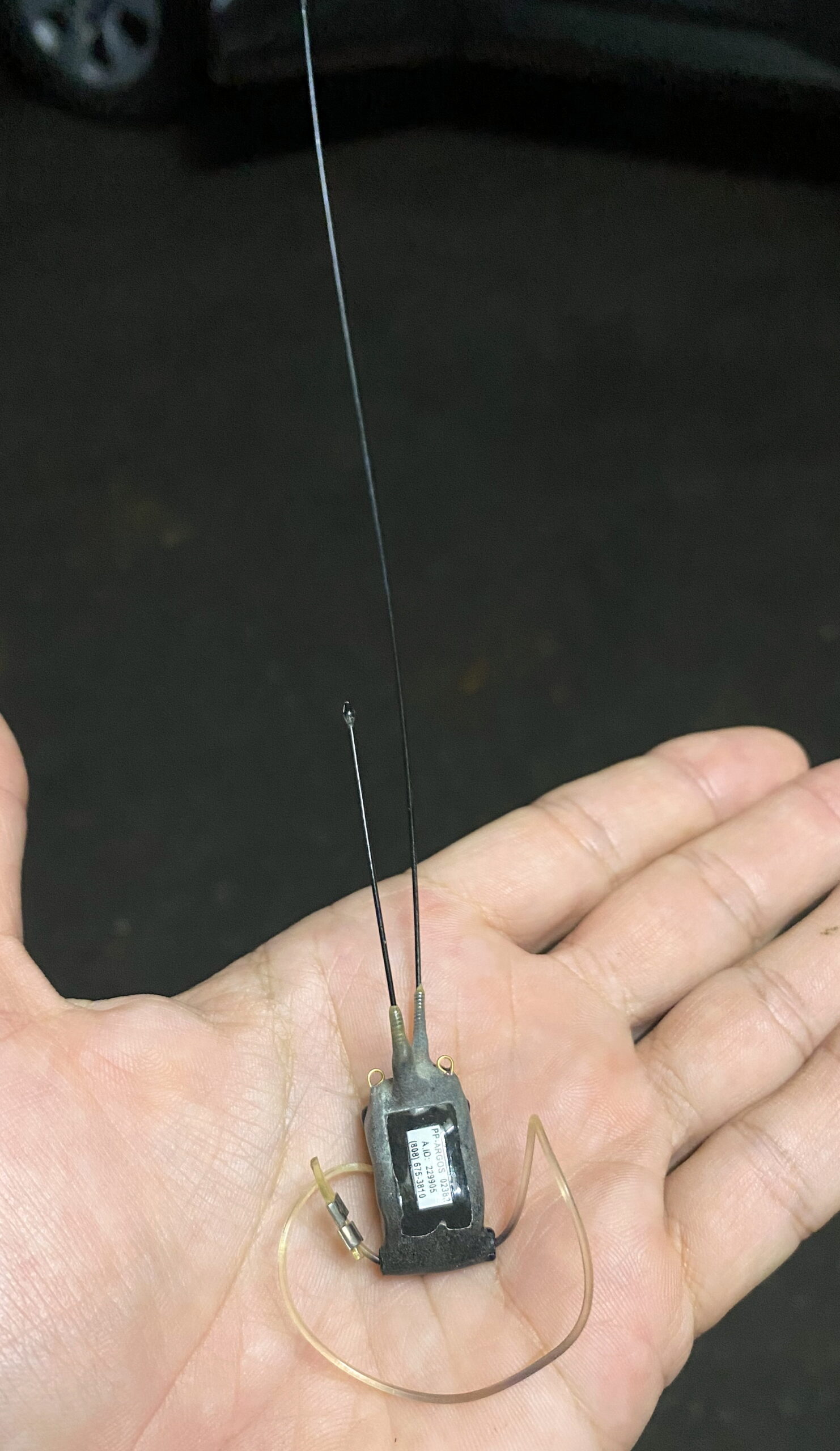
Unfortunately, the batteries in these satellite-signaling devices only have enough charge for one season. Total weight of the device and harness is a bit less than one U.S. nickle. Wally Johnson photo
But those kōlea were geniuses at staying just out of reach, dodging nets with such precision we joked that they could read our cars’ license plate numbers. Finally, persistence paid off. On November 29th, Joshua Fisher, a USFWS biologist and netgun expert, caught one of the four. And good news: After removing the tag and examining the bird, Wally saw no evidence that the device and its harness had caused the bird any harm.
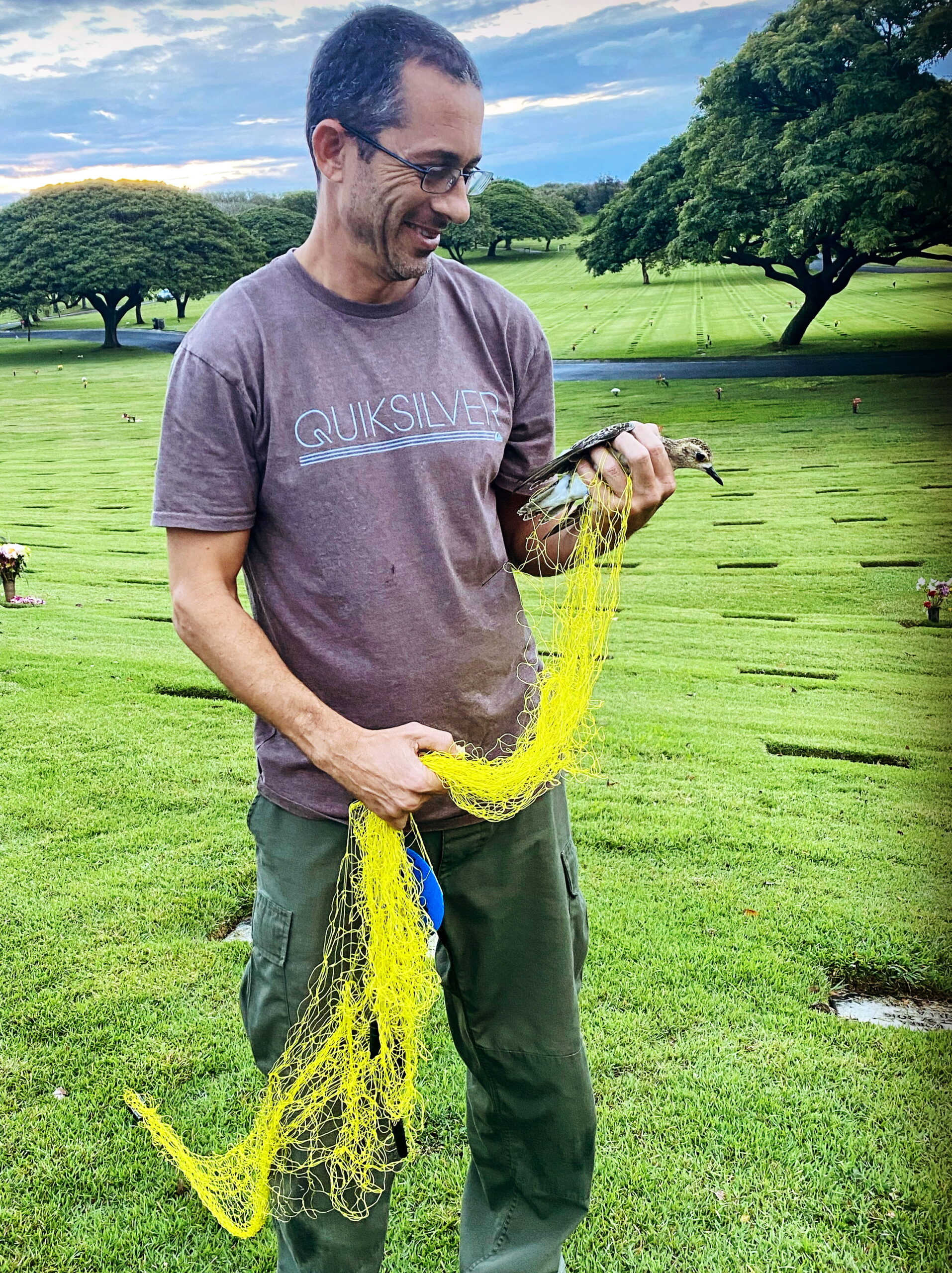
Josh with his hard-earned prize kōlea, November 29, 2023. Wally Johnson photo
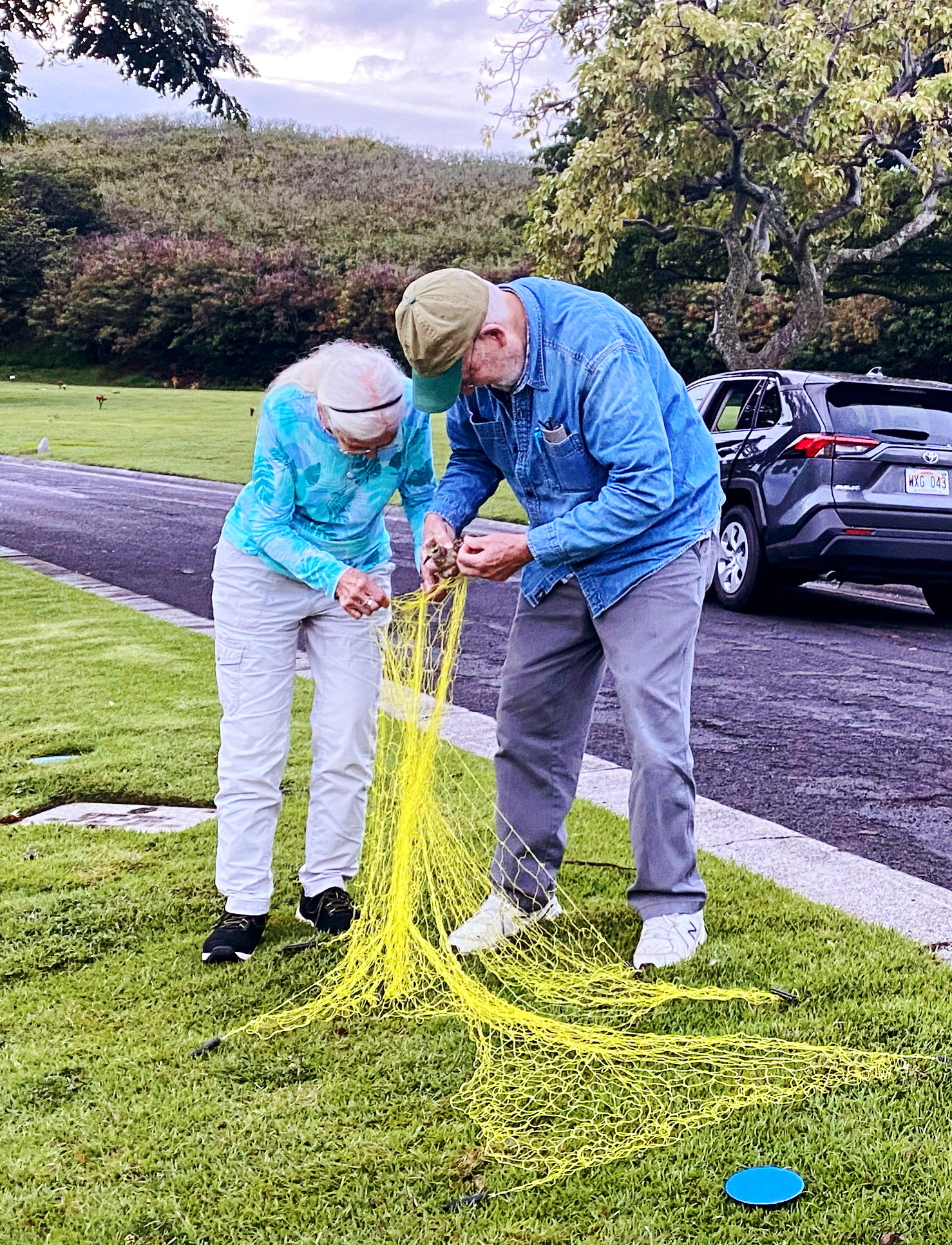
Wally Johnson and partner Diane Smith untangle the kōlea from the net. Josh Fisher photo
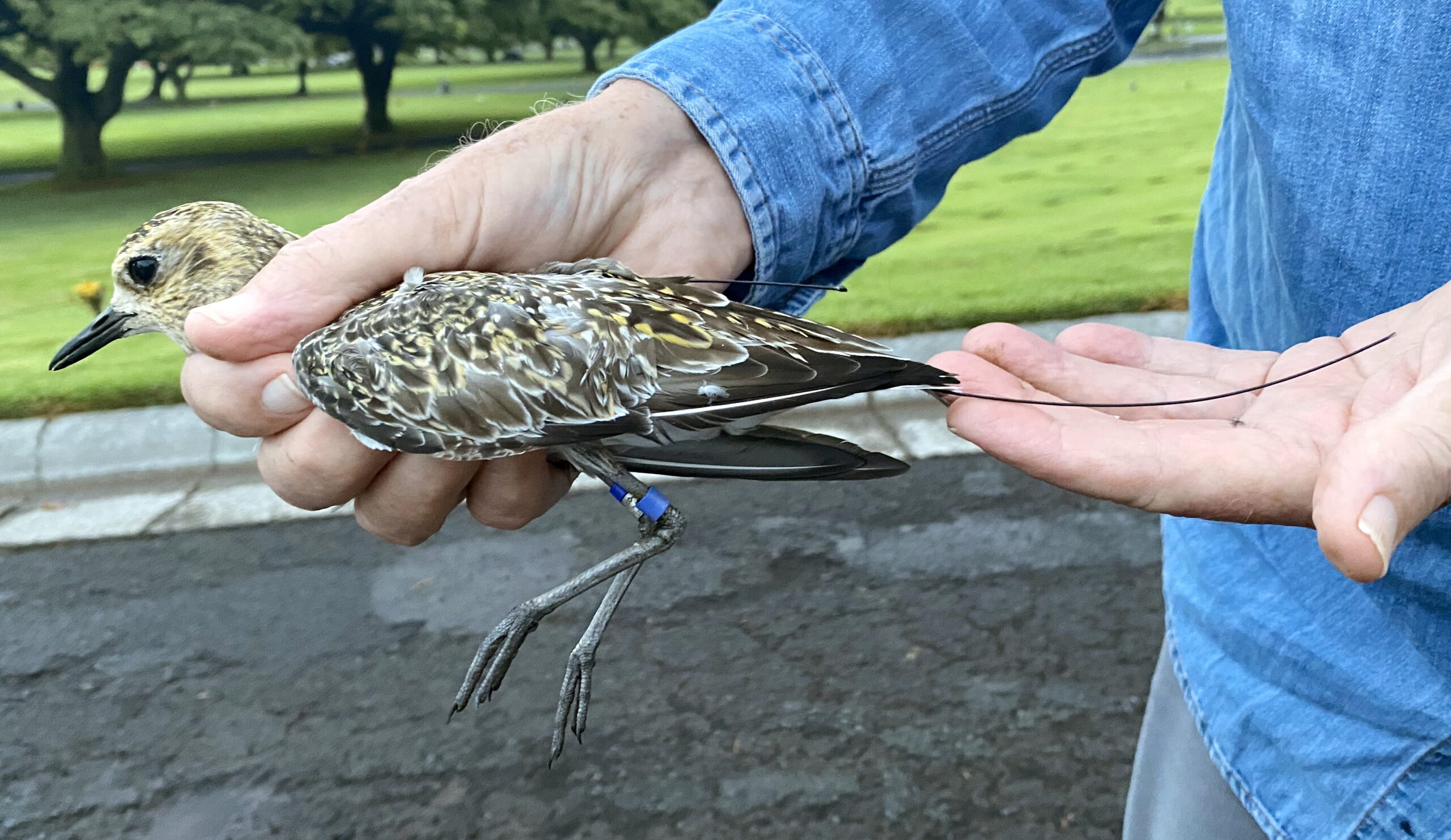
Leg bands and tracking tags are the only way to learn about Pacific Golden-Plovers’ age and travels. Such “jewelry” seems a lot for a little bird to carry, but apparently it doesn’t phase the hardy kōlea. Wally found no feather, body, or leg damage to this bird after two round-trip migrations. Josh Fisher photo
Tom Fake and Mr. X win a photo finish
Wally and his team of volunteers recently celebrated another achievement in Punchbowl Cemetery. A kōlea named Mr. X, named after its chosen wintering site in section X, has exceeded the kōlea longevity record. Wally was thrilled to announce with confidence that Mr. X is at least 21 years, 5 months old.

Mr. X with his 21-year-old aluminum band. Tom Fake photo
The former plover to hold the longevity title was a Bellows Air Force Station bird, also banded by Wally, that lived for at least 21 years 3 months.
Before Mr. X could be officially declared the oldest plover on record, Wally needed proof. This was no easy task. The bird had lost his three colored plastic bands that Wally added with the metal band for ID purposes. Last year, plover counters noticed that only one red plastic band remained. This year, only the metal band remains.
In order to be sure that this is Mr. X, Wally needed to know the numbers on the band.

Because Mr. X is more wary of people than our backyard plovers, getting close was a challenge. In addition, the bird’s body often shadowed the band, located high on the leg, above the ankle. (Birds have long footbones. The visible joints on their legs are their ankles.) We tried hiding behind a tree for a closer shot, but the bird was clearly aware of our presence, sometimes staring us down. Tom Fake photo
After several of us failed in attempts to get pictures of Mr. X’s band numbers, Tom Fake, skilled bird photographer and retired National Park Service Project Manager, tried. The band numbers are worn and hard to make out, but Tom persevered. With his long lens, patience, and some computer enhancement, Tom succeeded in producing sharp-enough numbers for a positive ID.
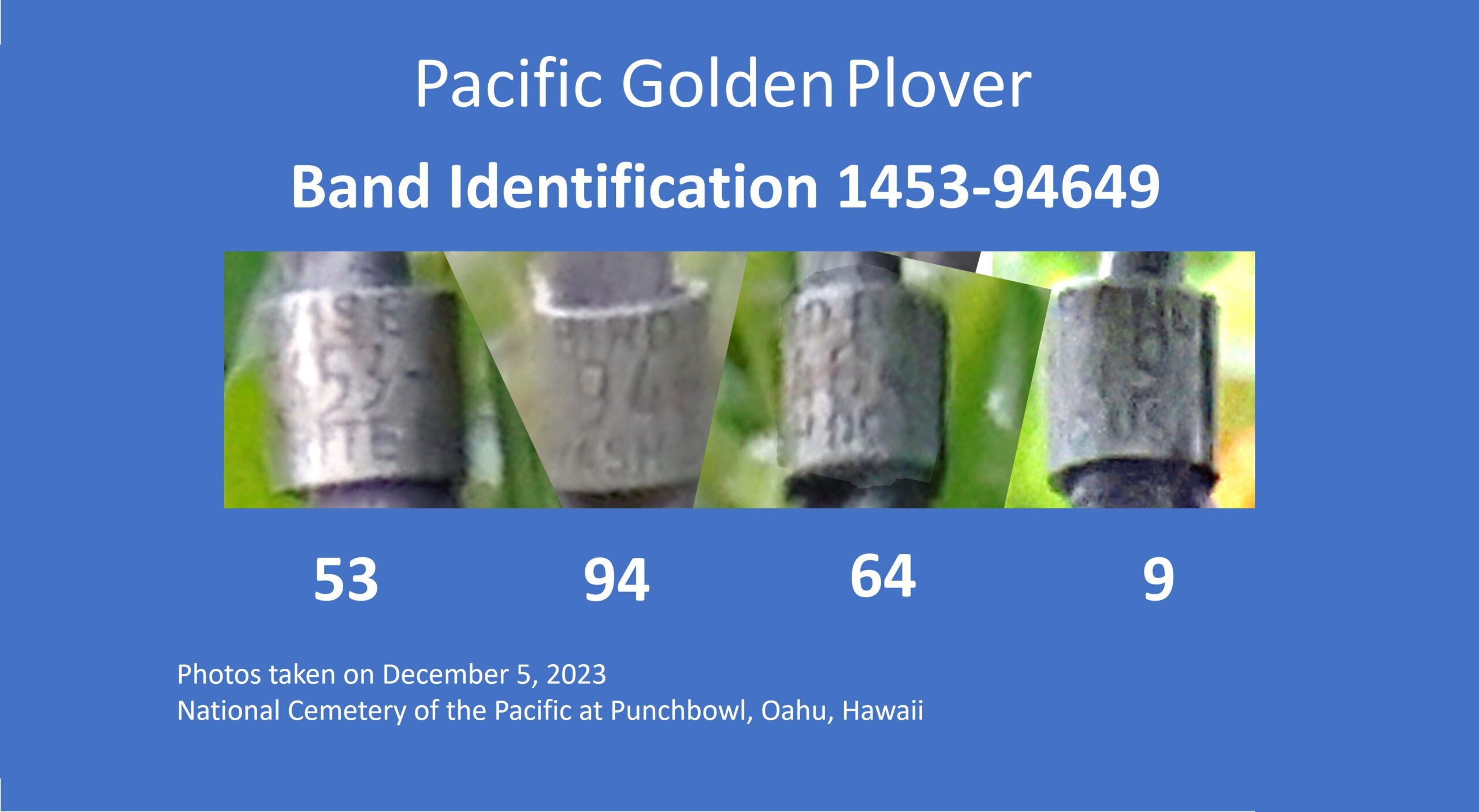
During his second attempt, Tom got several clear shots of Mr. X’s band numbers. The whole number is #1453-94649. Tom Fake photos and graphic.
And so we celebrate another remarkable fact about our beloved kōlea: Some live longer than 21 years, 3 months. How much longer, we’ll find out. We Mr. X fans will continue to check on his presence this winter. But that’s not as easy as it sounds. Besides being shy, and not often visible from the road, Mr. X doesn’t look a day over one.

The eXtraordinary Mr. X. If you visit, please respect this grand old bird, as well as the National Memorial Cemetery of the Pacific. Look through binoculars, be awed, and move on. Tom Fake photo